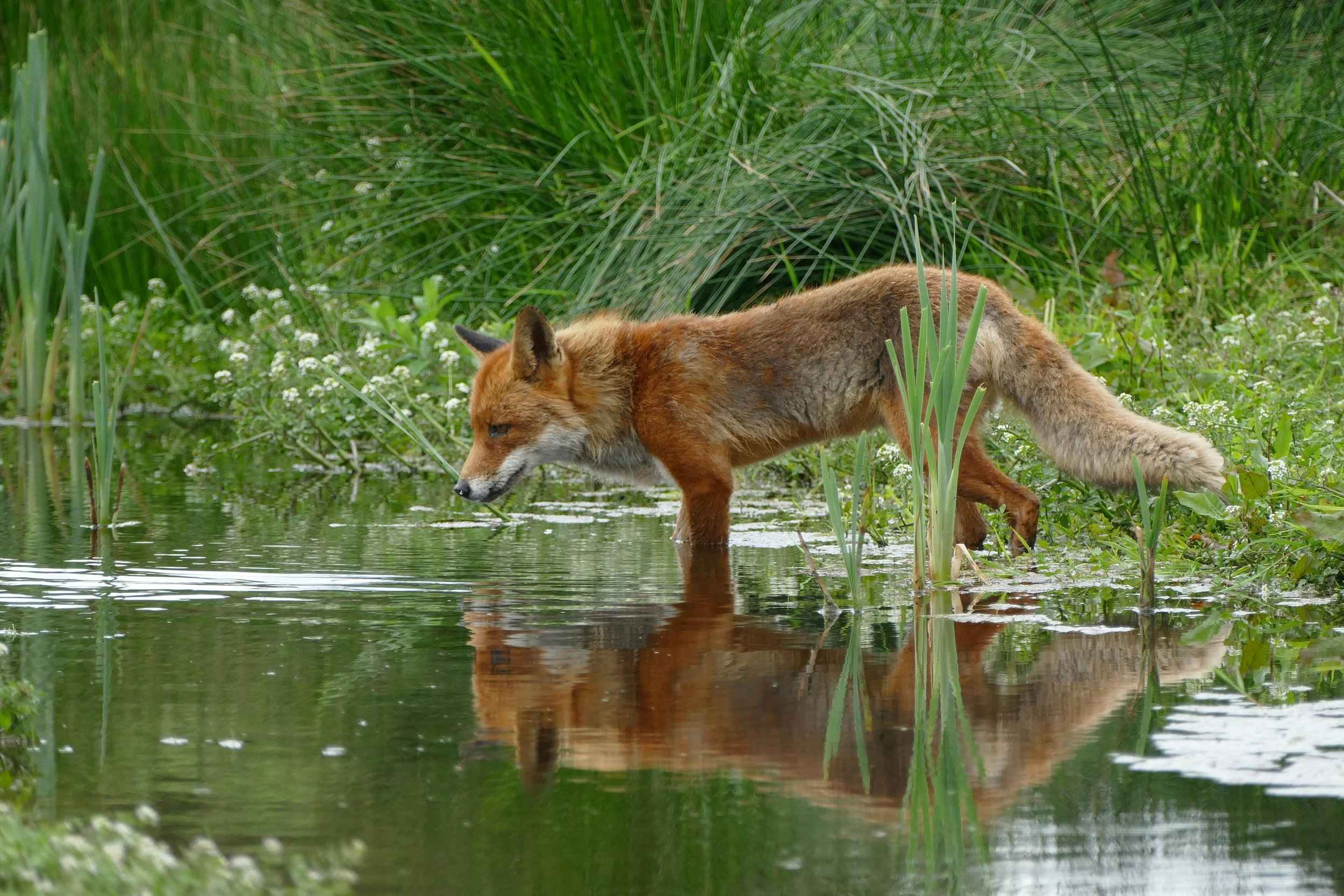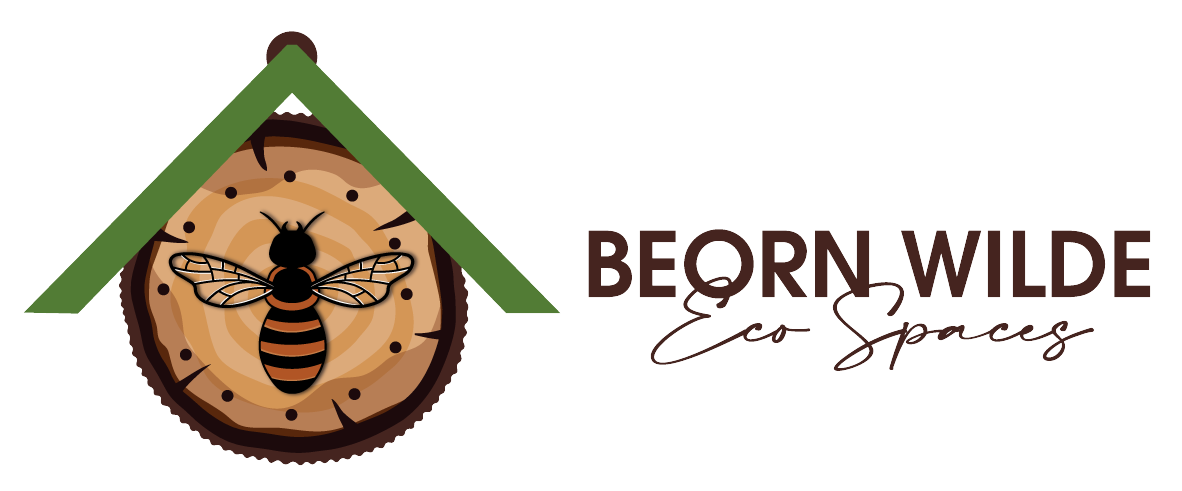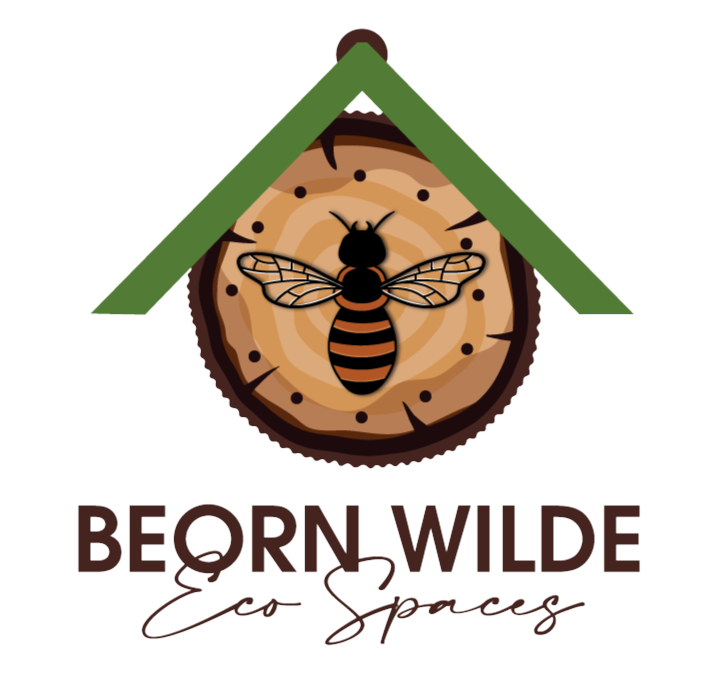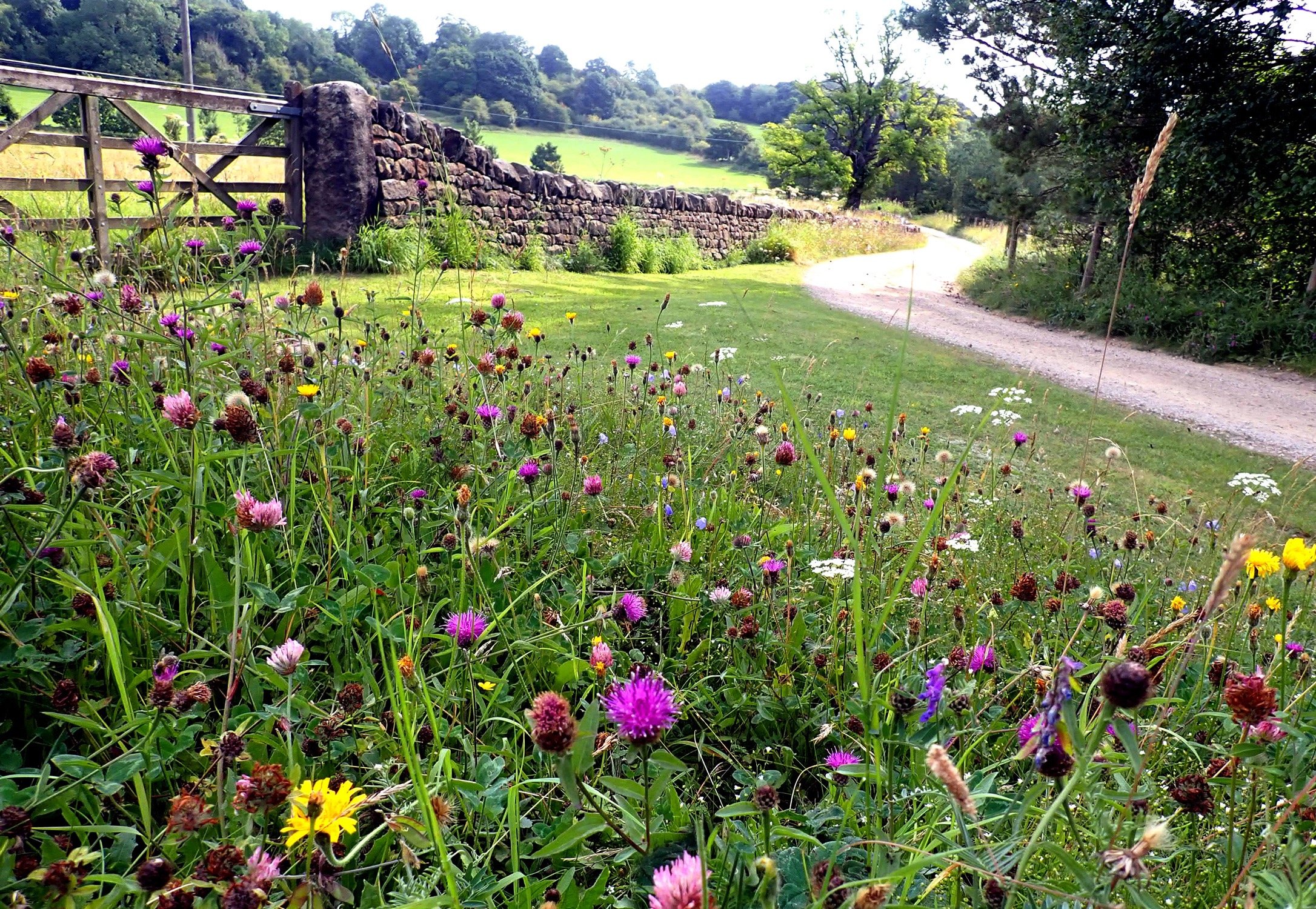
Wildlife gardening is an eco-friendly way of landscaping that attracts and supports local animals. It focuses on creating habitats with food, shelter, and water for creatures like birds, bees, butterflies, and amphibians. These gardens often include native plants, bird feeders, and water features like ponds or birdbaths. Wildlife gardening enhances biodiversity, adds beauty to outdoor spaces, and fosters a deeper connection with nature.
At Beorn Wilde Eco Spaces, we understand the important role that garden visitors play in the broader ecosystem and we are committed to creating and preserving habitats that support wildlife and enhance biodiversity.
Whilst we do specialise in wildlife ponds and wildflower meadows , we also offer smaller-scale products/services like bird boxes, bat boxes, beetle banks, insect hotels and hibernacula. Our habitat creation services are tailored to your preferences and garden’s aesthetic, including custom pond design, construction, and planting. Meadows can be established with either seed mix or turf, depending on your choice. Whether you’re looking for a unique, bespoke habitat or a ready-made commercial option, we’re here to provide the perfect solution for your garden.
In addition to our habitat creation services, we can also provide ongoing maintenance to ensure your wildlife spaces continue to flourish year after year. From seasonal care to habitat monitoring, we can help keep your ponds, meadows, and smaller wildlife features in top condition, supporting the long-term health of both your garden and the local wildlife.
Send us a message today and let’s talk habitats!
Wildlife Habitats
-
Native Plants - Plant a variety of native trees, shrubs, flowers, and grasses that provide nectar, pollen, fruits, seeds, and leaves as food sources for wildlife.
Bird Feeders - Hang bird feeders stocked with appropriate birdseed for native wild birds.
Fruit Trees - Fruit-bearing trees and bushes can attract birds and small mammals.
Insect-Friendly Plants - Include plants that attract insects like butterflies and bees, which are essential for pollination.
-
Wildlife Pond - Construct a wildlife-friendly pond with sloping sides to provide drinking and bathing opportunities for birds, amphibians, and insects.
Birdbaths - Place birdbaths or shallow dishes of water at ground level for smaller wildlife like insects and amphibians.
Rain Barrels - Collect rainwater, which can be used to create small puddles and water sources for wildlife.
-
Trees and Shrubs - Mature trees and shrubs offer shelter and nesting sites for birds and small mammals.
Bird Boxes and Bat Boxes - Install birdhouses and bat boxes to provide nesting and roosting spaces.
Rock Piles and Brush Piles - Create piles of rocks or branches as shelter for reptiles, amphibians, and small mammals.
Hedgehog Houses - If hedgehogs are native to your area, provide specially designed hedgehog houses.
-
Wildflower Meadows - Plant wildflower meadows to attract pollinators and provide a variety of habitats.
Beetle Banks - Create raised areas or strips with logs and branches to attract beetles, which are important for natural pest control.
Hibernacula - Build underground chambers or piles of leaves and logs as hibernation sites for reptiles and amphibians.
Bug Hotels - Install bug hotels or insect houses with a variety of materials for insects to shelter in.
-
Avoid using chemical pesticides and herbicides that can harm wildlife and disrupt the ecosystem.
-
Implement safety measures to prevent harm to wildlife, such as covering open water features with mesh to prevent drowning.
-
Regularly maintain and clean bird feeders, birdbaths, and other wildlife-friendly features.
Prune and manage plants and trees as needed to maintain a healthy ecosystem.
-
Be patient and allow time for wildlife to discover and adapt to your garden. It may take some time before you see a diverse range of species.
-
Spend time observing the wildlife in your garden, and consider keeping a journal or setting up a wildlife camera to record the visitors.






